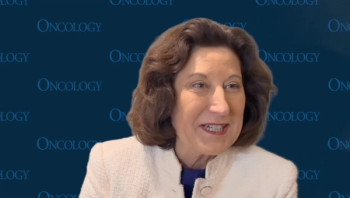
Facility-Level Factors Affect Inflammatory Breast Cancer Management
A database analysis found that facility-level factors such as location contribute more than patient-level factors to the underuse of guideline-recommended therapy for nonmetastatic inflammatory breast cancer.
A database analysis found that facility-level factors such as location contribute more than patient-level factors to the underuse of guideline-recommended therapy for nonmetastatic inflammatory breast cancer (IBC).
IBC is rare, but highly aggressive; the use of trimodality therapy (TT; chemotherapy, surgery, and radiotherapy) has been recommended since 2000 with no change, with survival outcomes improved among those who receive TT. “Although there is evidence that adherence to TT guidelines for the treatment of patients with nonmetastatic IBC will result in better patient outcomes, to the best of our knowledge there have been limited reports regarding variations in the management of this disease,” wrote study authors led by Yu Shen, PhD, of MD Anderson Cancer Center in Houston.
The researchers used the National Cancer Database to examine factors that contributed to variation in the use of TT in these patients. They examined 5,537 patients who underwent locoregional treatment between 2003 and 2011 at 542 hospitals (155 academic/research hospitals, 335 comprehensive community cancer programs, 46 community hospitals, and 6 other specified hospitals); the results were
Several patient-level factors were associated with the use of TT. For example, younger patients were treated with TT more commonly; compared to patients 70 years or older, those aged 60 to 70 had an odds ratio (OR) for TT use of 1.84 (95% CI, 1.47–2.30; P < .0001). This increased slightly for every 10 years younger in age. Higher income was also associated with more TT use.
Of the 542 hospitals in the study, 55 (10.1%) were found to be low outliers in terms of TT use, and 24 (4.4%) were high outliers (P < .05). Academic/research facilities were more likely to be low outliers (15.5%); no community hospitals were high outliers (all were either academic/research or comprehensive community cancer programs).
Facility location was found to be significantly associated with the use of TT (P < .0001), while the type of facility was not significantly associated after adjustment for significant patient-level factors and location. Centers in the Midwest were most likely to use TT; compared to those, hospitals in the South had an OR for TT use of 0.62 (95% CI, 0.52–0.74; P < .0001). Thirty-four of 198 hospitals in the South were low outliers.
The researchers also calculated contributions to the variance among hospitals in TT use, and found that facility-level factors were more important. Those factors accounted for 11% of the variance, whereas patient-level factors accounted for only 3.4%. This means, the authors wrote, that determining what other facility-level factors play a role is critical to improving TT use.
“Due to the rarity of IBC, it is critical to provide more education for physicians and to increase public awareness regarding its diagnosis and management,” the researchers concluded.
Newsletter
Stay up to date on recent advances in the multidisciplinary approach to cancer.














































































